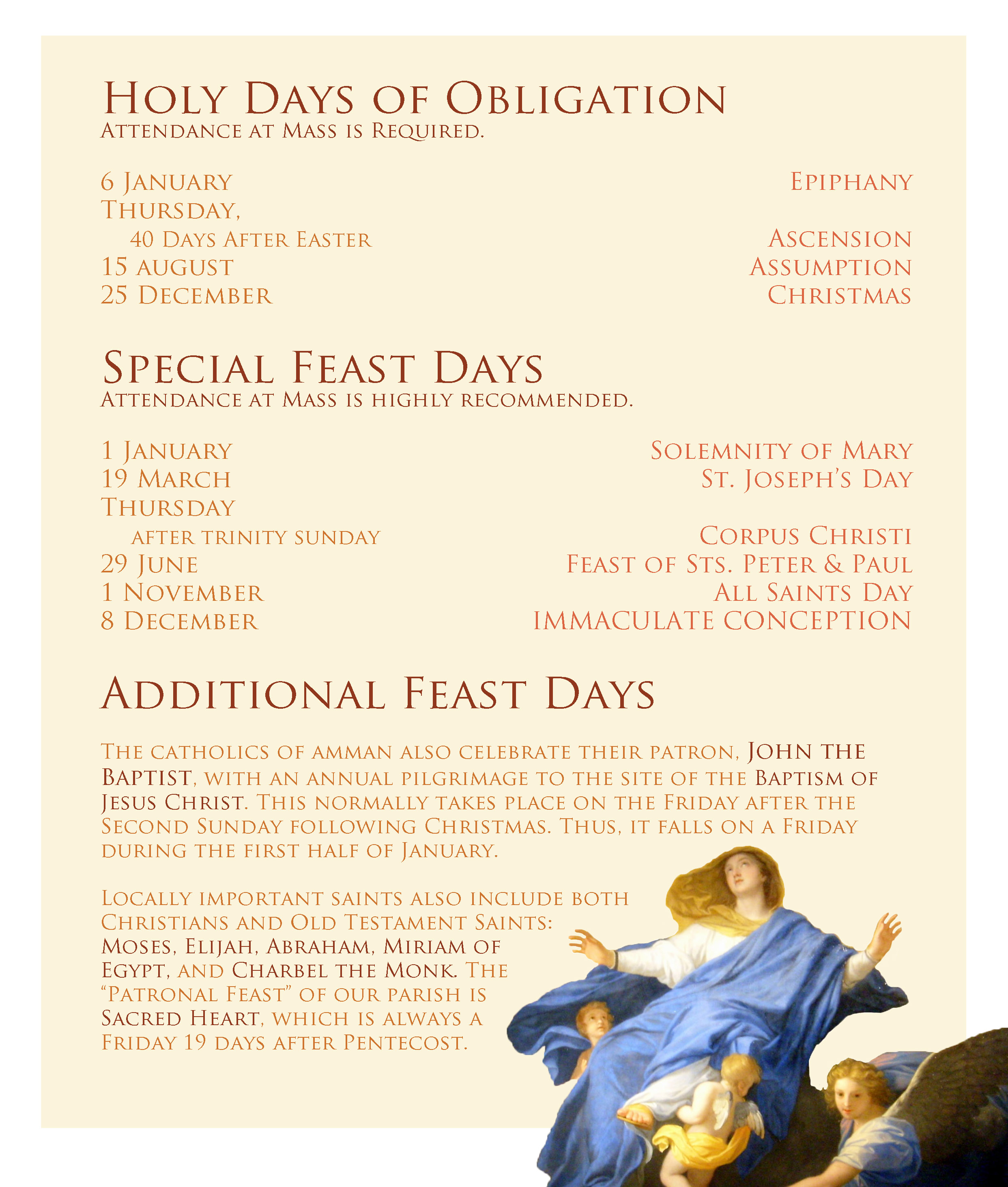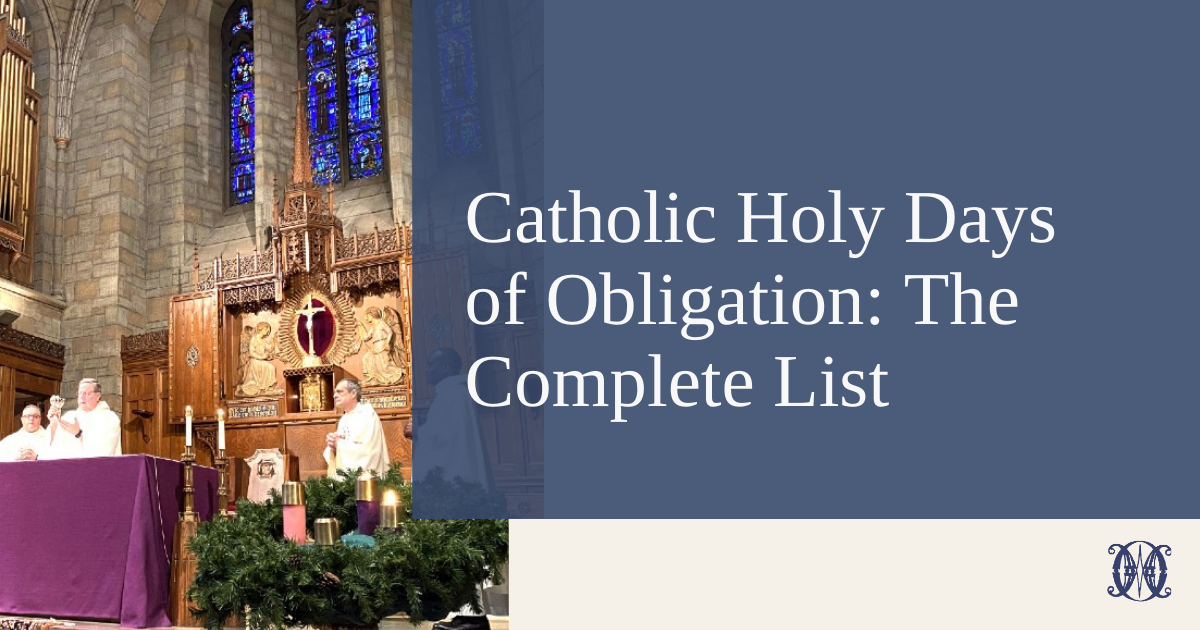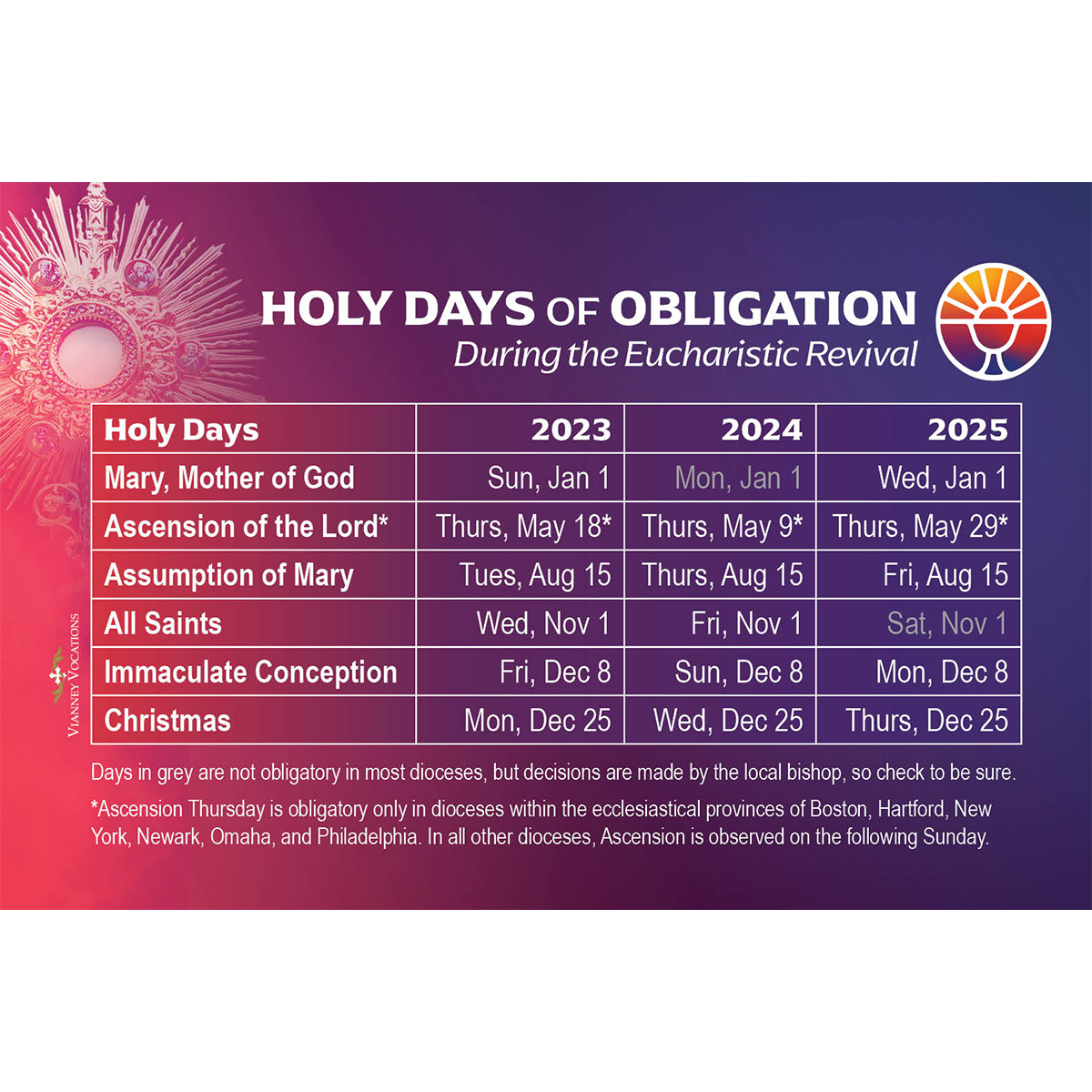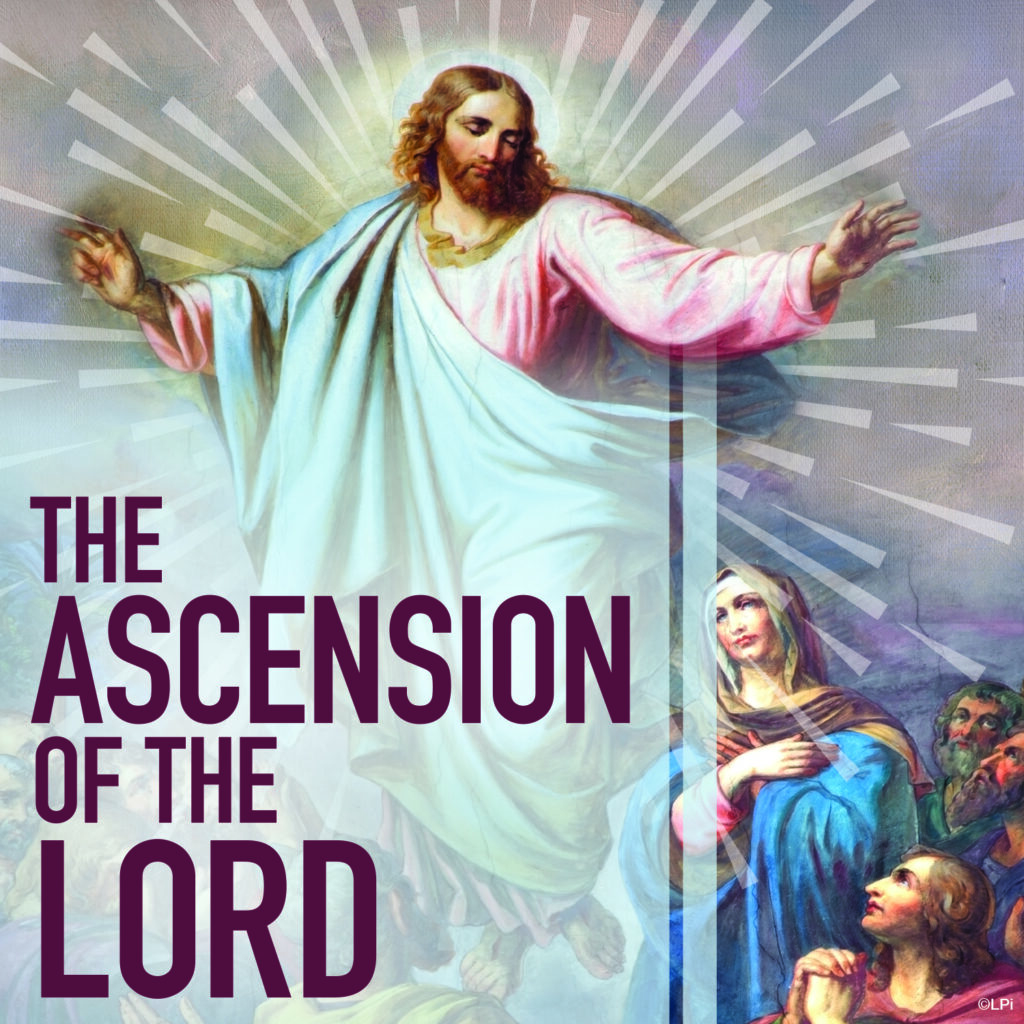Holy Days Of Obligation In The Catholic Church: 2025 And Beyond
Holy Days of Obligation in the Catholic Church: 2025 and Beyond
Related Articles: Holy Days of Obligation in the Catholic Church: 2025 and Beyond
Introduction
With great pleasure, we will explore the intriguing topic related to Holy Days of Obligation in the Catholic Church: 2025 and Beyond. Let’s weave interesting information and offer fresh perspectives to the readers.
Table of Content
Holy Days of Obligation in the Catholic Church: 2025 and Beyond

The Catholic Church observes specific days throughout the year as "Holy Days of Obligation." These days are designated for special remembrance and celebration of significant events in the life of Christ and the Church. They are not merely holidays, but rather occasions for deeper prayer, reflection, and participation in the liturgical life of the community.
Understanding Holy Days of Obligation
Holy Days of Obligation are days when Catholics are bound by the precept of the Church to attend Mass. This obligation stems from the Second Vatican Council, which emphasized the importance of communal worship and the Eucharist in the life of the faithful. Participating in Mass on these days is a way to actively engage in the Church’s mission of proclaiming the Gospel and celebrating the mysteries of faith.
The Importance of Observing Holy Days of Obligation
Observing Holy Days of Obligation offers numerous benefits for individuals and the Church as a whole:
- Strengthening Faith: Participating in Mass on these days provides a dedicated time for prayer, reflection, and renewal of faith. It allows individuals to deepen their connection with God and draw strength from the sacraments.
- Community Building: Attending Mass together as a community fosters unity and strengthens the bonds of fellowship. It reinforces the sense of belonging to a larger body of believers and fosters a shared experience of faith.
- Remembering Key Events: Holy Days of Obligation commemorate significant events in the life of Christ and the Church, such as the birth of Jesus, his resurrection, and the ascension. By participating in Mass on these days, Catholics actively remember and celebrate these pivotal moments.
- Living the Gospel: The obligation to attend Mass on these days underscores the importance of living the Gospel message in daily life. It encourages Catholics to prioritize their relationship with God and to actively participate in the mission of the Church.
Holy Days of Obligation in 2025
The Holy Days of Obligation for the year 2025 are:
- January 1: Solemnity of Mary, Mother of God
- January 6: Epiphany of the Lord
- March 19: St. Joseph, Spouse of the Blessed Virgin Mary
- May 1: St. Joseph the Worker
- May 25: Ascension of the Lord
- August 15: Assumption of the Blessed Virgin Mary
- November 1: All Saints Day
- December 8: Immaculate Conception of the Blessed Virgin Mary
- December 25: Christmas Day
Note: The dates listed above are based on the Gregorian calendar. Some countries may observe these days on different dates according to their local calendar.
FAQs about Holy Days of Obligation
1. What are the exceptions to the obligation to attend Mass on Holy Days of Obligation?
The obligation to attend Mass on Holy Days of Obligation can be excused for valid reasons, such as illness, serious work obligations, or caring for a sick person. In such cases, it is recommended to make a spiritual communion or engage in another form of prayer.
2. Can the obligation to attend Mass on a Holy Day of Obligation be transferred to another day?
No, the obligation to attend Mass on a Holy Day of Obligation cannot be transferred to another day. However, if a person is unable to attend Mass on the Holy Day itself, they can fulfill the obligation by attending Mass on the preceding or following Sunday.
3. What happens if someone does not attend Mass on a Holy Day of Obligation?
While the Church does not impose any specific penalties for not attending Mass on a Holy Day of Obligation, it is considered a serious sin of omission. It is important to remember that attending Mass is a way to fulfill one’s duty to God and to participate in the life of the Church.
4. Are there any other ways to observe Holy Days of Obligation besides attending Mass?
Besides attending Mass, individuals can observe Holy Days of Obligation through prayer, acts of charity, and reflection on the significance of the day. They can also participate in special events organized by their parish or community.
Tips for Observing Holy Days of Obligation
- Plan Ahead: Make arrangements to attend Mass in advance, especially if you have other commitments.
- Prepare Your Heart: Take time to reflect on the meaning of the day and prepare your heart for prayer.
- Participate Actively: Engage in the Mass by singing, praying, and listening attentively to the readings and homily.
- Share the Faith: Invite family and friends to join you in celebrating the Holy Day.
- Live the Gospel: Reflect on the Gospel message and how it applies to your daily life.
Conclusion
Observing Holy Days of Obligation is a vital aspect of the Catholic faith. By actively participating in Mass and dedicating time to prayer and reflection, individuals strengthen their relationship with God, foster community, and live out the Gospel message. These days are not merely holidays but opportunities to deepen faith, celebrate the mysteries of Christ, and engage in the mission of the Church.








Closure
Thus, we hope this article has provided valuable insights into Holy Days of Obligation in the Catholic Church: 2025 and Beyond. We appreciate your attention to our article. See you in our next article!